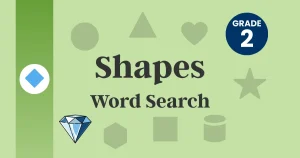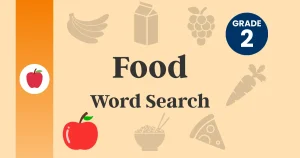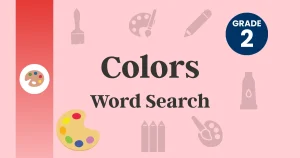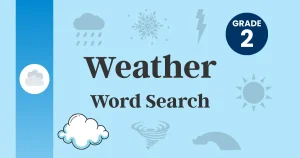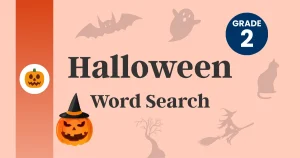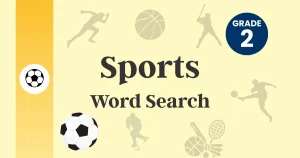🙂 Overview
Learning to recognize and name emotions is an important step in a child’s social and emotional development. This Grade 2 Emotions Word Search introduces fifteen common feelings, helping young learners connect English vocabulary with their own experiences. By practicing these words in a playful context, children build both language skills and emotional awareness.
🎮 How to Play
- Look at the list of fifteen emotion words.
- Search carefully in the puzzle grid for each word hidden horizontally or vertically.
- Circle or highlight the letters when you find a word.
- Keep going until all emotions are discovered.
- Use the answer key to double-check your results.
🎯 Learning Goals / Skills
- Identify and spell fifteen common English emotion words.
- Strengthen reading direction skills by scanning horizontally and vertically.
- Develop emotional vocabulary to express personal feelings more clearly.
- Practice focus and perseverance through puzzle-solving.
📖 Word List + Mini-Glossary
- HAPPY — feeling good, cheerful, or pleased.
- SAD — feeling unhappy or down.
- ANGRY — a strong feeling of displeasure.
- SCARED — feeling afraid of something.
- EXCITED — full of energy and anticipation.
- TIRED — needing rest or sleep.
- PROUD — feeling good about one’s own or others’ achievements.
- SHY — nervous or quiet around other people.
- BRAVE — showing courage in the face of fear.
- SILLY — playful or acting in a funny way.
- CALM — peaceful and relaxed.
- WORRIED — thinking about possible problems.
- SURPRISED — feeling sudden wonder or shock.
- JOYFUL — very happy, full of delight.
- LONELY — feeling alone or without company.
👩🏫 Teacher Tips
- Emotion Charades: After solving, ask students to act out one of the emotions while others guess the word.
- Feelings Journal: Encourage children to write a short sentence using one word, such as “I feel proud when I finish my homework.”
- Discussion Starter: Use the words to begin a class talk about when students have felt each emotion.
- Visual Connection: Pair the puzzle with emoji flashcards or simple drawings for younger learners.
🖨 Printable & Answer Key Notes
The puzzle is designed for Grade 2 learners with manageable word length and clear grid size. The “Print Blank” option offers a clean worksheet for class or home use, while the “Print with Answers” version highlights solutions for quick review. Teachers and parents can use the answer key to reinforce learning and connect each word to real-life emotional experiences.
